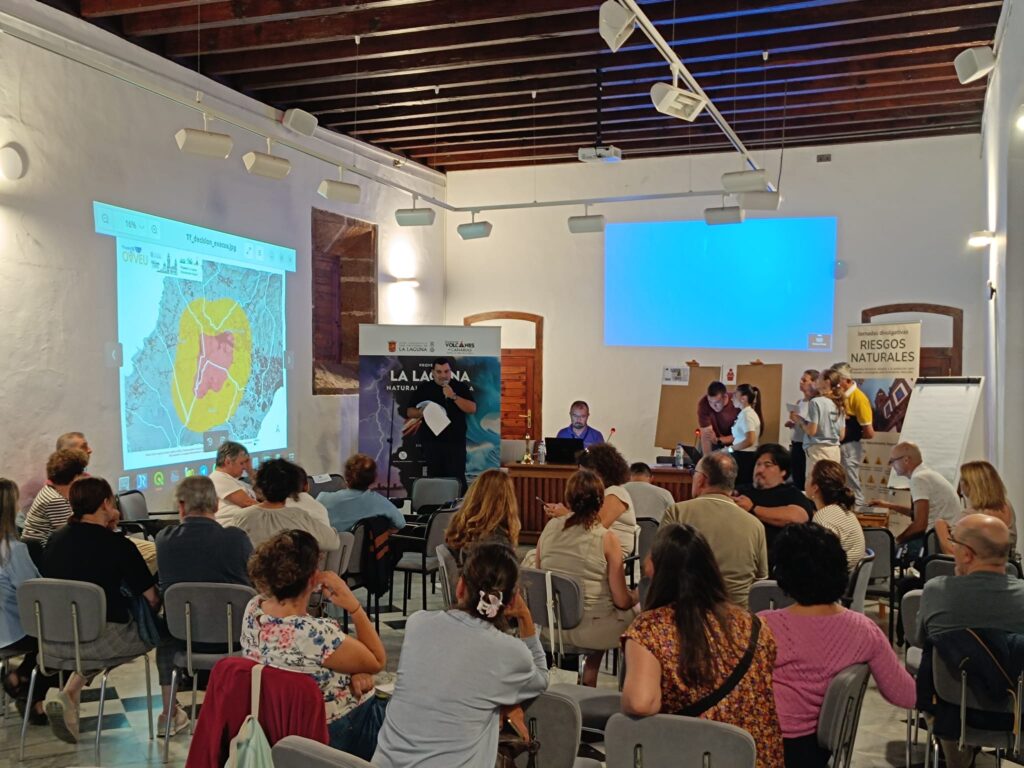The additional lane on the TF-5 motorway, specifically the stretch from Guamasa to Los Rodeos airport (heading towards Santa Cruz), is anticipated to be tendered in the first quarter of 2025. The project has an execution timeline of 24 months and a budget of 60 million euros, with the responsibility for its implementation resting with the Canarian Government.
This initiative was among the subjects discussed in a meeting attended by the President of the Canary Islands Government, Fernando Clavijo; the regional vice president, Manuel Domínguez; the regional councillor for Public Works, Housing and Mobility, Pablo Rodríguez; the president of the Tenerife Cabildo, Rosa Dávila; and the mayor of La Laguna, Luis Yeray Gutiérrez, to discuss mobility issues in this region of the island.
During the meeting, Clavijo emphasised the necessity for the three administrations to prioritise this project, which they have agreed upon, as it will significantly enhance mobility.
The Minister of Public Works expressed the need to expedite this project, noting that it already has the required environmental impact assessment and is nearing the completion stage, thus enabling it to be tendered under the current highway agreement we are implementing.
In this context, the president of the Cabildo underscored that the third lane is a key priority for regional mobility and reiterated the intention to tender it in the first quarter of 2025, with a 24-month execution period. Moreover, the implementation will fall to the Government of the Canary Islands, rather than the Cabildo as previously suggested.
In addition to the third lane between Guamasa and Los Rodeos, plans are also in motion for the La Laguna bypass, although it is still in the early stages, aimed at reducing the impact of the TF-5 by routing traffic underground and eventually covering it with an extensive boulevard.
“We continue to progress on the ring road, a large-scale project that will be constructed within a tunnel, requiring an investment of 500 million euros, facilitating our goal of completing the Island Ring,” Dávila added.
Pablo Rodríguez remarked that this project “is not yet in a finalised state” as it needs to be tailored to meet the conditions set by the environmental impact declaration, which awaits a favourable report from the Biodiversity department of the Canary Islands Government. “This is likely to be one of the largest initiatives, not just in Tenerife, but across the entire Canary Islands,” he emphasised.
Additionally, Luis Yeray Gutiérrez highlighted “the shared commitment of both the Cabildo and the Government of the Canary Islands to the municipality of La Laguna.” Regarding mobility, he noted “the allocation of 50 million euros towards the Gorgolana tunnel, which will be tendered by the Cabildo and executed by the Government, alongside 60 million euros for the stretch from Los Rodeos to Guamasa, addressing one of the busiest traffic zones within the municipality.”
“When discussing mobility in Tenerife, the key pending issues are the northern closure of the island ring and the metropolitan area challenges, which particularly affect the entry and exit points of La Laguna,” he remarked, also considering the Government’s budget estimate of 2.5 million euros “for various initiatives related to the TF-5 variant and achieving subterranean routing as it traverses the municipality.”
He also expressed gratitude for the contributions of over 1,200,000 euros from the Government of the Canary Islands and 500,000 euros from the Cabildo to celebrate the 25th anniversary of La Laguna’s designation as a World Heritage City.
Housing
On another note, representatives from the three administrations deliberated on various housing matters, with the mayor stating that the council has made accessible to the Government, through Icavi and Visocan, “all municipally owned land available for the development of public housing.”















